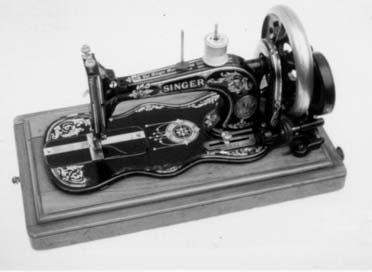
figure 1
Singer 12K or ‘New Family’ machine
The Singer 'Improved Family' Sewing Machine
The Singer ‘class 12’ (12K in England) or ‘New Family' domestic machine of 1865 (Figure 1) was the foundation of Singer’s dominance of the sewing machine market. It was the most successful machine of the nineteenth century and, although Singer gave up manufacturing it in the 1890s, clones of it continued to be made up until the 1930s.
However, it was not the perfect machine!
The two shafts were coupled by bevel gears which were expensive to manufacture and sometimes shed teeth. The unbalanced drive to the reciprocating shuttle caused vibrations which limited the speed at which it could sew; not important for most domestic use but less than ideal for the commercial seamstress. The long thin bobbin of the ‘boat’ shuttle did not hold much thread and was difficult to wind evenly using the original bobbin winder. The trapezoidal cross-section needle bar wore and was difficult to adjust. There was no positive takeup to pull the stitch tight.
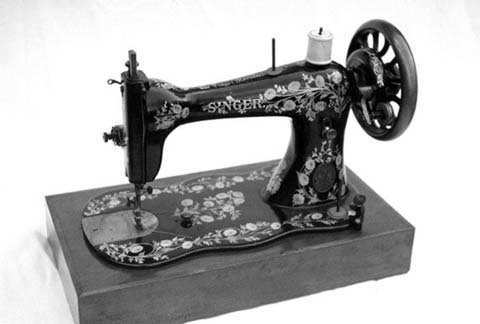
figure 2
Singer ‘Improved Family’ machine of the 1880s
So as not to stand still the Singer Company developed a successor called the ‘Improved Family’ or ‘IF’ machine which was given the designation ‘class 15’.
This was to have a round bobbin storing more thread, an oscillating shuttle and drive which was to have much smaller unbalanced forces so that it could operate at much higher speeds, positive takeup using a cam and roller, and a high arm to give more room around the sewing plate.
The original patent was taken out by P. Diehl, a Singer engineer, in 1878 (UK patent 2813 of 13th July 1878). The ‘Improved Family’ was launched in 1879 and brought new standards of quietness and smoothness to domestic sewing machines (Figure 2). It was only available as a treadle machine in its original form and was probably the last Singer machine to be made with ‘mother-of-pearl’ inlay (Figure 3).
The shuttle oscillated in a circular race and had a peculiar shape (Figure 4), being known as the ‘highpoint’ or ‘mutton chop’ shuttle. Getting the bobbin in and out is an easy way of breaking fingernails. Just as the ‘New Family’ or 12K had a larger brother (the ‘Medium’ or 13K) for dressmakers the ‘IF’ or 15K had a larger brother (the 16K) with a longer arm (Figure 5).
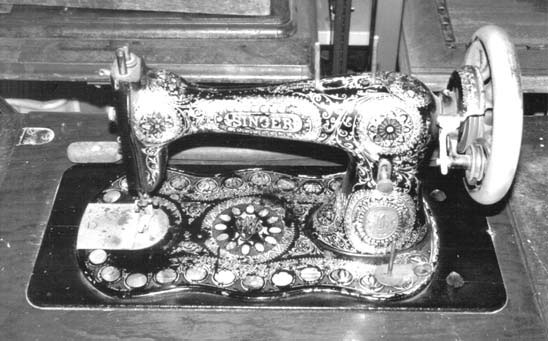
figure 3
Pearled Singer ‘Improved Family’
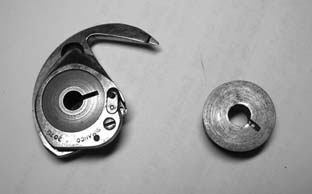
figure 4
IF ‘highpoint’ shuttle
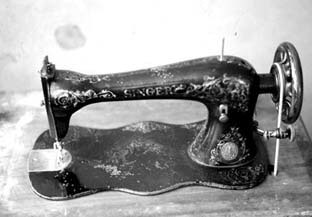
figure 5
Singer 16K for dressmakers
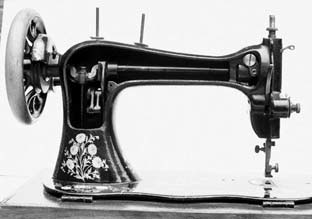
figure 6
Back of IF arm showing mechanism
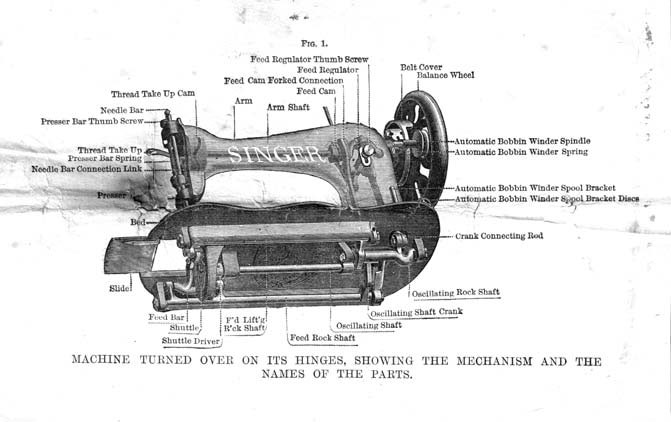
figure 7
Picture of IF in instruction book

figure 8
Class 15-30 ‘Central Bobbin’ shuttle
The ‘IF’ had a single shaft in the arm (Figure 6) with a crank and cams to drive the shuttle and feed mechanisms under the base plate (Figure 7). It cannot have been the runaway success that the 12K was as six years later, in 1885, Singer introduced a much inferior machine, the Vibrating Shuttle (27K) machine for domestic use. The base size and many attachments were common to both 15K and 27K and they were sold side by side for many years.
By the 1890s the name ‘Improved Family’ had been dropped and the machine had received its only serious upgrade. The shuttle was redesigned to incorporate a larger cased bobbin centered on the rotational axis of the shuttle (Figure 8) and it got a rectangular base. These modifications were registered in a series of patents by Diehl and the Singer Company starting with patent 15663 of 15 th November 1887 in the UK. In this form, the ‘class 15-30’ or 15K30 (Figure 9) became the ‘Central Bobbin’ machine which is still around today. In the first decade of the twentieth century it was supplemented for a few years with a full rotary version called the ‘class 115’ which was similar to the Wheeler & Wilson number 9 and used a cased bobbin and rotary hook.
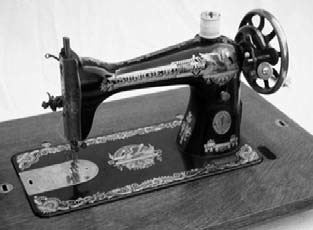
figure 915K30 machine of early 1900s
Like all Singer machines both the ‘class 15’ and ‘class 27/28’ machines were widely cloned by other manufacturers. Singer gave up their manufacture in the 1960s but the ‘class 15’ mechanism remains in production today for budget machines.
Martin Gregory

figure 10
from Singer price list dated 1891 - the cover cost £1.00 extra for the Gothic version





